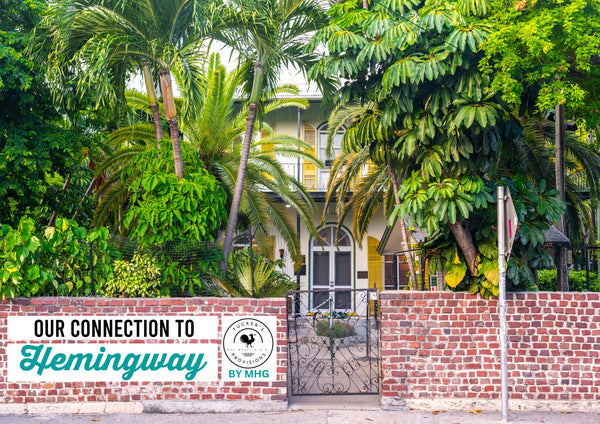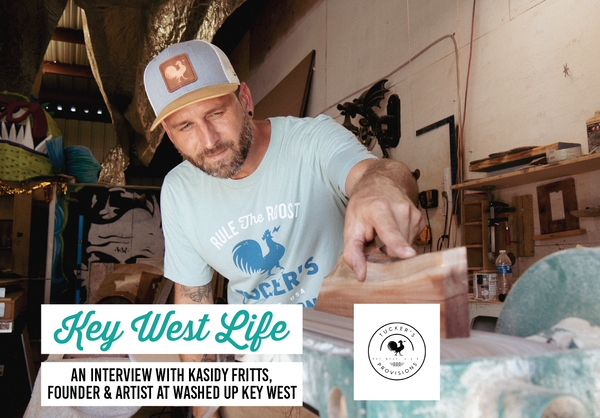We've Been the Richest City: Key West’s Rise to the Top

- By MHG / Cover photo, Courtesy of Monroe County Library Collection
At the southernmost tip of the United States, where the blue-green waters of the Gulf of Mexico and the Atlantic Ocean converge lies Key West – a unique slice of land that once stood as one of the richest cities per capita in America.

Picture a different time, a time when the world was connected by the vessels that sailed its oceans. It was the 19th century, and a bustling maritime trade saw ships laden with treasures and provisions traversing the globe. In its heyday, Key West witnessed over 100 ships passing through its waters every day.


But these same waters were notorious for their treacherous reefs, and proved fatal for many. On average, at least one ship per week met its untimely end along the dangerously positioned barrier reef protecting the islands. A reef system that stretches for more 150 miles, from the Dry Tortugas north to Miami.

From perils of the reef, plus the locals’ willingness to seize opportunity, grew the remarkable industry that fueled the town’s growth, wrecking.
In the history of Key West, "wrecking" refers to the practice of salvaging cargo and valuables from shipwrecks that occurred on the beautiful but treacherous reefs surrounding the island. Key West’s strategic position between the Gulf and Atlantic Ocean, situated the island nicely along major shipping routes during the 19th century. Unfortunately, the shallow waters and reefs led to numerous shipwrecks in the area.

The local residents who took part in the industry, known as "wreckers," capitalized on this misfortune by salvaging the cargo from wrecked vessels. These wreckers were skilled in navigating the dangerous waters and often used observation towers to spot stranded ships. Once a wreck was discovered, a cry of "Wreck ashore!" would echo across the island, signaling the beginning of a race to the site of the wreck.

Life in Key West, like many places during this era, was a delicate dance between prosperity and danger. And, the wreckers were a breed apart, each vying to be the first to reach the wreck. The first person to reach the wreck would become the "wrecking master." They would assume control over the salvage operation and receive a larger share of the salvaged goods. Other wreckers would also join in the effort to recover as much cargo as possible.

The salvaged goods, ranging from valuable items like gems and precious metals to everyday supplies, were brought back to the island to be auctioned off. The atmosphere on the docks during these times was electric as wreckers unloaded the salvaged spoils from the wrecked ships to be hauled to the auction houses in Key West.

These auctions became significant events in Key West’s economic and social life, as the recovered items represented both a financial opportunity and a what would become a lasting connection to the maritime history of the region.

The wrecking industry played a pivotal role in transforming Key West into one of the richest cities per capita in the United States during the 19th century. It attracted a diverse population of entrepreneurs and adventurers seeking to capitalize on the frequent shipwrecks. The industry's dominance gradually declined with the arrival of railroads and advent of improved navigational technology. In 1921, the wrecking courts were closed, signaling the end of an era that had transformed Key West from a modest island into one of the wealthiest cities per capita in the United States.

The legacy of the wrecking era remains, and is evident in the island's historical sites and museums that offer a glimpse into this unique chapter of Key West's past. The island's economy has certainly taken on many different forms over time, finally evolving into the thriving tourist destination it is today.
Yet throughout, the spirit of resilience, seizing opportunity, and thriving against the odds remains etched on the very soul of the island. The tale of Key West's rise to wealth through wrecking, serves as a reminder that sometimes from the most unlikely places, like a little island in the middle of the sea, the most extraordinary tales will emerge.

When you’re on the island next, after you’ve stopped in to see us at Tucker’s Provisions, be sure to visit the Key West Shipwreck Treasure Museum, located at 1 Whitehead Street, Key West, Florida 33040

Leave a comment
Comments will be approved before showing up.
Also in Blog

Our Connection to Hemingway

GOOMBAY FESTIVAL - Bahama Village, Key West

Key West Life - Artist & Woodworker Kasidy Fritts of Washed Up Key West
We recently took a trip out to Stock Island to visit renowned wood artist Kasidy Fritts of Washed Up Key West.
How did you get started and what inspired you to blend local tropical hardwoods to create such stunning pieces?
You could say I was raised in a woodshop. When I was a kid in Pennsylvania my mom and dad converted an old barn out back into their own woodshop and they made a lot of small farmhouse-style trinkets and decorations. Fast forward to 2013 shortly after my first daughter was born I made my wife a table as a thank you and realized I really liked doing it.
